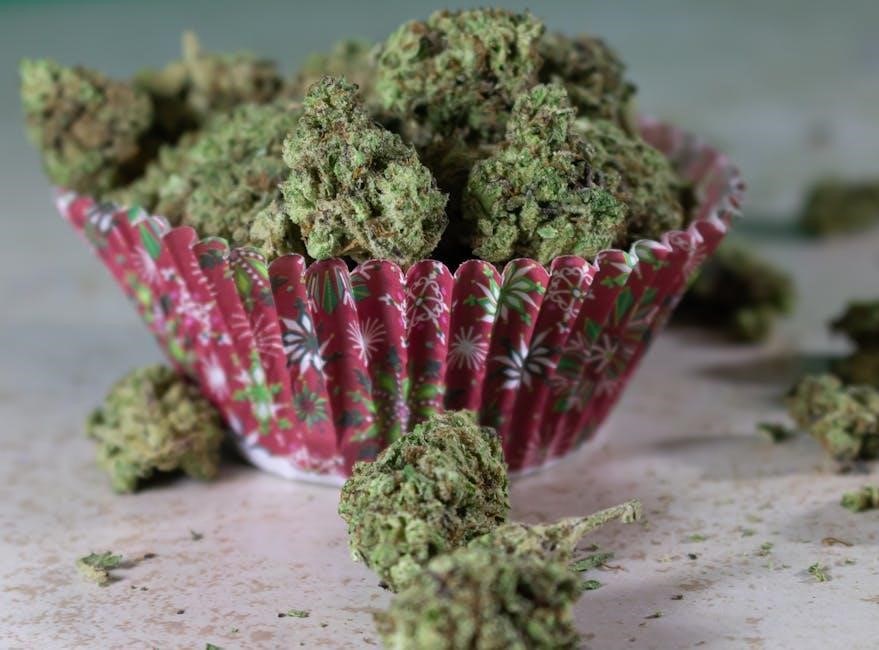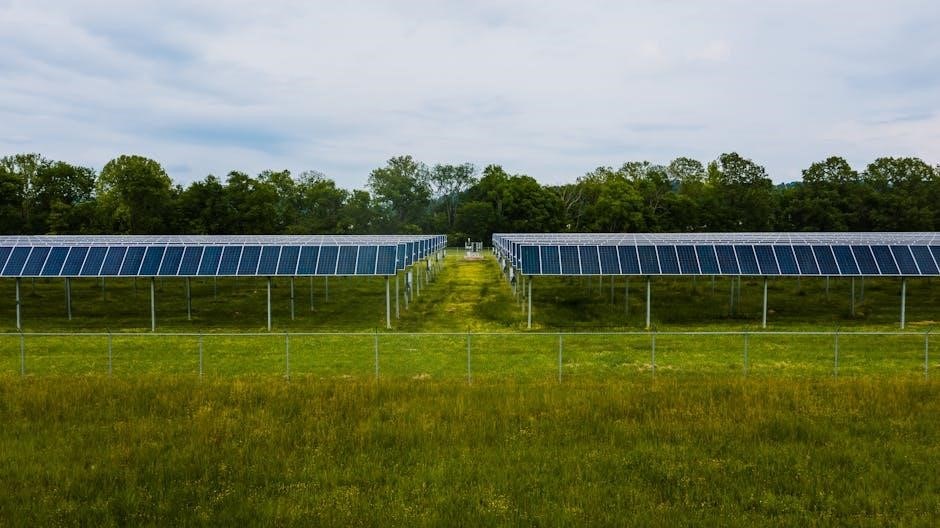Compare n Save Grass and Weed Killer offers effective solutions for lawn care. Proper mixing ensures safe application and optimal results. Designed to target unwanted growth efficiently, it provides a reliable way to maintain your outdoor spaces with precise instructions for user-friendly experiences.
1.1 Overview of Compare n Save Grass and Weed Killer
Compare n Save Grass and Weed Killer is a concentrated herbicide designed to eliminate unwanted grass and weeds effectively. It is commonly used in lawn care to protect gardens and landscapes from invasive growth. The product is known for its strong concentration, making it a cost-effective solution for large areas. It is easy to apply and works quickly to target and destroy unwanted vegetation, ensuring optimal results without harming the environment or desired plants. Proper mixing is crucial for effectiveness and safety.
1.2 Importance of Proper Mixing Instructions
Proper mixing instructions are essential for both safety and effectiveness. Incorrect mixing can lead to under-application, reducing product efficacy, or over-application, posing risks to plants, soil, and the environment. Following guidelines ensures the herbicide works as intended, targeting only unwanted growth while protecting desirable vegetation. Accurate mixing also prevents waste, optimizes cost-efficiency, and minimizes potential harm to beneficial organisms. Always follow the recommended dilution ratios and safety precautions to achieve the best results while maintaining environmental responsibility.

Understanding the Mixing Process
Mixing Compare n Save products requires careful preparation to ensure effectiveness and safety. The process involves combining the herbicide with water in precise ratios, using proper equipment, and following clear instructions to achieve optimal results while minimizing risks to people, plants, and the environment.
2.1 Materials Needed for Mixing
- Compare n Save herbicide concentrate
- Measuring cup or container
- Clean water source
- Stirring stick or spoon
- Garden sprayer or application equipment
- Gloves and protective eyewear
Ensure all materials are clean and suitable for pesticide mixing to avoid contamination and ensure accurate dilution.
2.2 Safety Precautions Before Mixing
Always wear protective gear, including gloves, goggles, and a face mask. Work in a well-ventilated area, away from children and pets. Avoid mixing near water sources or food crops. Ensure the area is free from sparks or open flames. Wash hands thoroughly before and after handling the product. Follow all label instructions carefully to minimize exposure and prevent accidents. Proper safety measures ensure safe and effective use of the herbicide.

Compare n Save Grass Killer Mixing Instructions
Compare n Save Grass Killer requires precise mixing for effective results. Always follow the label instructions to ensure safety and optimal performance. Properly mixed solutions target unwanted grasses efficiently while minimizing risks to desirable plants and the environment.
3.1 Step-by-Step Mixing Guide for Grass Killer
Start by filling your sprayer with water to the recommended level. Add the specified amount of Compare n Save Grass Killer concentrate, ensuring accurate measurement. Agitate the mixture thoroughly to dissolve the product evenly. Allow the solution to settle for a few minutes before use. Always follow the label instructions for the correct dilution ratio based on the size of the area you’re treating. Re-agitate the mixture if it sits for an extended period to maintain even distribution. This ensures effective and safe application.
3.2 Recommended Dilution Ratios
For Compare n Save Grass Killer, the standard dilution ratio is 1 ounce of concentrate per gallon of water. This mixture is effective for most grass types and treatment areas. For tougher grass or larger coverage, increase to 2 ounces per gallon, but avoid exceeding this to prevent over-application. Always measure accurately to maintain the recommended ratio. For smaller areas, mix 4 ounces per gallon for precise application. Adjustments should align with the product label to ensure safety and efficacy.
3.3 Common Mistakes to Avoid
When mixing Compare n Save Grass and Weed Killer, avoid using excessive concentrate, as it can damage desirable plants. Not calibrating the sprayer leads to uneven application. Applying during extreme temperatures or rain reduces effectiveness. Storing mixed solutions improperly can degrade the product. Neglecting to wear protective gear exposes users to potential skin or eye irritation. Always follow the recommended dilution ratio and application guidelines to ensure safe and effective results. Proper preparation and adherence to instructions are crucial for optimal performance.
Compare n Save Weed Killer Mixing Instructions
Compare n Save Weed Killer requires precise mixing to ensure effectiveness. Follow the instructions carefully to achieve the right concentration for targeting weeds without harming the environment.
4.1 Step-by-Step Mixing Guide for Weed Killer
- Start by filling your sprayer with the recommended amount of water.
- Add the specified ounces of Compare n Save Weed Killer concentrate.
- Mix thoroughly to ensure the solution is evenly distributed.
- Always wear PPE, including gloves and goggles, during mixing.
- Double-check the label for precise measurements to avoid over-application.
- Do not exceed the recommended concentration to prevent plant damage.
- Apply the solution immediately after mixing for optimal results.
4.2 Recommended Dilution Ratios
The recommended dilution ratio for Compare n Save Weed Killer is typically 1 to 3 ounces of concentrate per gallon of water. For lighter infestations, start with 1 ounce per gallon, while heavier growth may require up to 3 ounces. Ensure the ratio matches the target weed type and growth stage for effective control. Avoid exceeding the maximum concentration to prevent plant damage. Always refer to the product label for specific guidelines, as ratios may vary based on application conditions and desired outcomes.
4.3 Common Mistakes to Avoid
Common mistakes include overmixing or under-mixing the solution, which can reduce efficacy or harm plants. Not following the recommended dilution ratio is another error, leading to ineffective or excessive chemical application. Failure to measure accurately or using the wrong water volume can also cause issues. Applying the mixture in direct sunlight or before rain can decrease effectiveness. Neglecting to wait the recommended time before re-entry or not calibrating the sprayer properly are additional pitfalls that can impact results and safety.

Key Differences in Mixing Instructions
Key differences lie in concentration levels, water volume, and application timing. Grass killer requires precise dilution for selective targeting, while weed killer may need adjusted ratios for broader coverage.
5.1 Concentration Levels: Grass vs. Weed Killer
Concentration levels differ significantly between grass and weed killer. Grass killer typically requires a higher concentration to effectively target robust grasses, while weed killer may use lower concentrations for broader weed control. Proper dilution ensures efficacy without harming desirable plants. Always follow the product’s guidelines to avoid under- or over-concentration, which can lead to ineffective results or potential plant damage. Adjustments may vary based on the specific product formulation and target vegetation type.
5.2 Water Volume Requirements
Water volume requirements vary between grass and weed killer solutions. Grass killer often demands precise water measurements to ensure penetration into dense turf, while weed killer may require less water for broader coverage. Proper water volume ensures the active ingredients reach the target effectively. Using too much water can dilute the solution, reducing efficacy, while too little may lead to over-concentration. Always adhere to the recommended water ratios to achieve optimal results and avoid plant damage. Clean water is essential for consistent performance.
5.3 Application Timing and Frequency
Application timing and frequency are crucial for effectiveness. Grass killer works best when applied during active growth, typically in spring or early summer. Weed killer is most effective on young, actively growing weeds. Apply grass killer every 4-6 weeks for persistent growth, while weed killer may require reapplication every 2-3 weeks to target regrowth. Timing applications during calm, dry weather ensures better absorption and reduces drift. Follow the product’s guidelines for optimal results and environmental safety.

Factors Affecting Mixing Accuracy
Water quality, temperature, and equipment condition significantly impact mixing accuracy. Hard water or extreme temperatures can alter chemical solubility, while worn equipment may lead to inconsistent measurements and improper mixing.
6.1 Water Quality and pH Levels
Water quality and pH levels significantly influence mixing accuracy. Hard water or high mineral content can reduce herbicide efficacy, while extreme pH levels may destabilize the solution. Ideal water pH for mixing is between 5.5 and 7.5. Using water with high alkalinity or acidity can lead to reduced effectiveness or incomplete dissolution of the active ingredients, affecting overall performance. Testing water quality before mixing ensures optimal solution stability and prevents application issues. Proper pH balance is crucial for maintaining herbicide potency and ensuring intended results.
6.2 Temperature and Weather Conditions
Temperature and weather conditions play a crucial role in mixing accuracy. High heat can cause evaporation, reducing solution strength, while cold temperatures may slow herbicide activation. Rain or humidity can dilute the mixture, lowering efficacy, while windy conditions increase drift risk. Ideal mixing occurs in calm, dry weather with temperatures between 60°F and 85°F. Avoid mixing during extreme weather to ensure uniform application and prevent environmental contamination. Weather stability ensures the herbicide remains effective and adheres to target areas properly, maximizing results and safety.
6.3 Sprayer Calibration and Equipment
Proper sprayer calibration ensures accurate herbicide application, preventing under or over-treatment. Calibrate your sprayer before use to match the recommended flow rate and pressure. Use a measuring container to verify output volume per acre or area. Regularly inspect nozzles and filters for clogs or wear, replacing them as needed. Maintain equipment cleanliness to prevent residue buildup, which can affect future mixing accuracy. Well-maintained equipment ensures consistent application, optimizing herbicide effectiveness and reducing waste. Always follow manufacturer guidelines for specific sprayer models and settings.

Safety Measures and Precautions
Always wear PPE, including gloves and goggles, when mixing or applying herbicides. Ensure good ventilation and avoid inhalation of fumes. Keep products away from children and pets. Dispose of empty containers safely and wash hands thoroughly after handling. Follow all label instructions carefully to minimize risks and protect the environment. Proper precautions ensure safe and effective use of Compare n Save products for optimal results.
7.1 Personal Protective Equipment (PPE)
Wearing appropriate PPE is crucial when mixing or applying Compare n Save Grass and Weed Killer. This includes long-sleeved shirts, pants, closed-toe shoes, chemical-resistant gloves, and protective eyewear. A dust mask or respirator is recommended to avoid inhaling particles. Ensure all PPE fits properly and is free from holes or tears. Avoid wearing loose clothing that could come into contact with the solution. Proper PPE use minimizes skin and eye irritation and ensures safe handling of the product. Always wash PPE thoroughly after use and store it in a clean, dry place.
7.2 Storage and Handling of Chemicals
Proper storage and handling of Compare n Save Grass and Weed Killer are essential for safety and effectiveness. Store the product in its original container with the label intact. Keep it in a cool, dry, well-ventilated area away from direct sunlight and heat sources. Ensure the container has a tight-fitting lid and is inaccessible to children, pets, and wildlife. Avoid storing it near food, water, or other household chemicals. Always follow the manufacturer’s instructions for storage and handling to prevent accidents and contamination.
7.3 First Aid and Emergency Procedures
In case of exposure to Compare n Save Grass and Weed Killer, act quickly to minimize harm. If skin contact occurs, wash the affected area with soap and water. For eye exposure, flush with clean water for at least 15 minutes. If ingested, do not induce vomiting; seek medical attention immediately. Keep the product’s label or SDS handy for emergency responders. Store emergency contact numbers nearby. Prompt action ensures safety and prevents potential health risks.

Best Practices for Application
For optimal results, apply Compare n Save products during calm weather and early growth stages. Avoid spraying in direct sunlight or extreme temperatures to ensure effectiveness and safety.
8.1 Optimal Time for Application
Apply Compare n Save products during early morning or late afternoon to avoid direct sunlight and high temperatures. Spring and fall are ideal seasons for application, as target plants are actively growing. Ensure the solution dries completely on foliage before rain or irrigation to maximize effectiveness. Avoid spraying during windy conditions to prevent drift onto desirable plants. Proper timing ensures better absorption and minimizes environmental impact, leading to more efficient weed and grass control results.
8.2 Spray Techniques for Even Coverage
For even coverage, maintain a consistent walking pace while spraying to avoid over-saturating any area. Hold the sprayer at a steady height, approximately 12-18 inches above the target, to ensure uniform application. Adjust the nozzle to achieve a wide, fan-shaped spray pattern, minimizing drift. Avoid spraying during windy conditions to prevent drift onto non-target areas. Make two passes over the area at right angles to ensure thorough coverage. This method ensures the solution reaches all intended surfaces effectively without wasting product.
8.4 Avoiding Drift and Overspray
To prevent drift and overspray, apply the solution on calm days with low wind speeds. Use a drift-reducing nozzle and maintain a consistent height above the target area. Avoid spraying in windy or gusty conditions, as this can carry the solution to unintended areas. Keep the sprayer at a uniform angle and avoid excessive pressure, which can cause fine droplets to drift. Use a spray shield or protective barrier when working near desirable plants or surfaces to block overspray. Always spray in smaller, controlled swathes for better accuracy.

Troubleshooting Common Mixing Issues
Identify under-mixing or over-mixing issues promptly. Adjust the mixture ratio and rinse equipment thoroughly to avoid residue buildup. Ensure proper agitation for even distribution of the solution.
9.1 Under-Mixing or Over-Mixing
Under-mixing leaves undissolved particles, reducing effectiveness, while over-mixing wastes product and may cause residue. Both can lead to uneven application and potential plant damage. Check dilution ratios carefully and ensure thorough agitation; Use a calibrated measuring cup or sprayer to avoid errors. If unsure, start with a small batch to test consistency. Proper mixing ensures optimal performance and safety for your lawn or garden. Always refer to the product label for precise guidelines to achieve the desired results effectively.
9.2 Uneven Efficacy of the Solution
Uneven efficacy occurs when the solution fails to consistently target weeds or grass. This can result from improper mixing, such as inconsistent dilution ratios or incomplete dissolution of the product. Environmental factors like wind, rain, or uneven spraying may also contribute. To address this, ensure thorough mixing, use a calibrated sprayer, and apply during optimal weather conditions. Testing the solution on a small area before full application can help identify and correct issues, ensuring uniform results and maximizing the product’s effectiveness.
9.3 Residue or Foam Formation
Residue or foam formation can occur when mixing Compare n Save products, often due to over-concentration or improper water temperature. Excess product may not dissolve fully, leaving residue or creating foam. To prevent this, use the recommended dosage, avoid hot water, and ensure thorough agitation. Regularly rinse equipment to remove any leftover residue. Addressing these issues ensures the solution remains effective and prevents clogging of spray equipment, maintaining optimal performance and extending the life of your application tools.

Environmental Considerations
Environmental considerations are crucial when using Compare n Save products. Proper use minimizes ecological impact, ensuring safe application and sustainable lawn care practices for a healthier environment.
10.1 Biodegradability of the Products
10.2 Impact on Beneficial Plants and Wildlife
Compare n Save products can affect beneficial plants and wildlife if not used correctly. Avoid spraying on flowers or plants frequented by pollinators like bees and butterflies. Pets and livestock should be kept away from treated areas until the solution dries. Proper application ensures minimal harm to non-target species, but improper use may inadvertently damage neighboring plants or wildlife habitats. Always follow instructions to minimize environmental disruption and protect local ecosystems.
Compare n Save products can harm beneficial plants and wildlife if misapplied. Avoid spraying near pollinator-attractive flowers or water sources. Bees, butterflies, and other pollinators may be affected by drift. Pets and wildlife should be kept away until the solution dries. Proper use minimizes risks, but overspray or runoff can unintentionally damage nearby plants or habitats. Always follow label guidelines to protect non-target species and maintain a balanced ecosystem.
10.3 Proper Disposal of Unused Mixtures
Proper disposal of unused Compare n Save mixtures is crucial to prevent environmental contamination. Always follow local regulations for hazardous waste disposal. Do not pour leftover solution down drains or sewers, as it can harm aquatic life. Instead, seal unused mixtures in their original containers and take them to a designated hazardous waste collection facility. Ensure labels are intact for proper identification and handling. This responsible approach helps protect the environment and public health.
For small quantities, mix with absorbent material like cat litter, let it dry, and dispose of in regular trash. Never compost or reuse containers for food or water.
Cost and Value Comparison
Compare n Save products offer competitive pricing with excellent coverage rates, ensuring value for money. Their concentrated formulas reduce long-term costs, making them a cost-effective choice for lawn maintenance and weed control.
11.1 Price Per Unit and Coverage Area
Compare n Save products are priced competitively, offering a cost-effective solution for lawn care. The grass killer typically covers up to 5,000 square feet per gallon, while the weed killer covers slightly less due to higher concentration needs. Both products provide excellent value, with a lower price per unit compared to many alternatives, making them a budget-friendly choice for homeowners and professionals aiming to maximize coverage without compromising effectiveness.
11.2 Long-Term Efficiency and Effectiveness
Compare n Save products demonstrate strong long-term efficiency, with residual control lasting up to 6 months. This extended action reduces the need for frequent reapplications, saving time and resources. The formula prevents regrowth effectively, ensuring weed and grass control over an extended period. While initial costs may seem moderate, the product’s durability and lasting results provide excellent value, making it a practical choice for maintaining landscapes without constant upkeep. This efficiency aligns well with both residential and commercial needs for consistent weed management.

User Reviews and Feedback
Users praise Compare n Save for its effectiveness and ease of use. Many highlight its cost-efficiency and long-lasting results. Some note minor challenges with mixing accuracy.
12.1 Customer Satisfaction Ratings
Compare n Save Grass and Weed Killer receives high satisfaction ratings, with many users praising its effectiveness and ease of use. Customers often highlight its cost-efficiency and long-lasting results. The product consistently ranks well in reviews, with a significant percentage of users recommending it for lawn care needs. While some users note minor challenges with mixing accuracy, overall feedback remains positive, showcasing its reliability in tackling unwanted grass and weeds effectively.
12.2 Common Complaints or Issues
Some users report challenges with Compare n Save Grass and Weed Killer, particularly regarding mixing instructions. A common issue is the potential for under- or over-mixing, which can affect efficacy. Others mention difficulty in achieving precise measurements, especially for large areas. Additionally, some users find the instructions too vague, leading to inconsistent results. Despite these concerns, most issues can be resolved by carefully following the guidelines and using the recommended dilution ratios for optimal performance and safety.
12.3 Success Stories and Testimonials
Many users praise Compare n Save Grass and Weed Killer for its effectiveness when mixed correctly. Homeowners and gardeners report successful weed control and lush, healthy lawns. Testimonials highlight how precise mixing instructions lead to professional-grade results. One user shared, “It completely transformed my garden!” Another noted, “Easy to mix and apply—works wonders!” These stories underscore the product’s reliability and user-friendly design, making it a top choice for lawn care enthusiasts seeking efficient solutions to common weed and grass challenges.
Proper mixing and application of Compare n Save Grass and Weed Killer ensure effective results. Always follow instructions for safe and successful lawn care management.
13.1 Summary of Key Differences
Compare n Save Grass and Weed Killer differ in formulation and usage. Grass killer targets broadleaf weeds in lawns, requiring higher concentration and specific water ratios for safe application. Weed killer is versatile for various surfaces but needs precise dilution to avoid overspray. Timing also varies, with grass killer applied during active growth and weed killer used flexibly. Adhering to these distinctions ensures optimal results and prevents damage, making proper mixing crucial for effectiveness and safety.
13.2 Choosing the Right Product for Your Needs
Selecting the appropriate Compare n Save product depends on your specific needs. For lawns, opt for the grass killer to target broadleaf weeds while preserving grass. For non-lawn areas like driveways or gardens, the weed killer is ideal due to its broader spectrum. Consider the type of weeds, desired results, and application area when deciding. Proper mixing and application ensure effectiveness and prevent unintended harm to plants or surfaces, making it crucial to follow instructions tailored to your situation.
13.3 Final Tips for Safe and Effective Use
Always adhere to the mixing instructions for optimal results. Wear PPE, including gloves and goggles, to minimize exposure. Apply during calm, dry weather to prevent drift. Double-check mixture ratios to avoid under- or over-application. Avoid spraying beneficial plants or water sources. Dispose of unused solutions responsibly. For best outcomes, reapply as directed and monitor treated areas. Consult professionals if unsure. Prioritize environmental safety and follow local regulations to ensure responsible use of Compare n Save products.